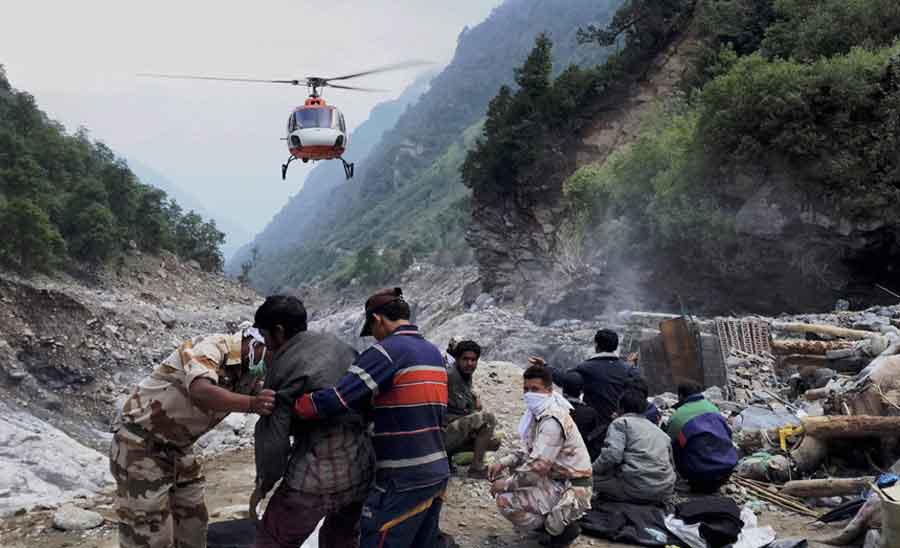Over the past few decades, world have recorded increase in the rate and impact of natural disasters which are attributed to population explosion, global trend in urbanization, land use and pressure on the ecosystems. This development induced a great pain and suffering on humanity in terms of food insecurity, loss of properties, lives and so on. For instance, The recent estimates of global food insecurity suggest that over 821 million people experience food insecurity compared to 785 million in 2015 [1]. According to Natural Disaster Database, earthquakes alone have killed more than 700, 000 people since 1990 [2].
Inadequate preparedness in response to most of these disasters in major densely populated areas has raised likelihood of the severity impact of their occurrence.
Destructive effects of disasters, although inevitable, could be mitigated by a proactive approach and the development of appropriate preparedness plans. Responding to a natural disaster in an acceptable timely manner after its occurrence plays a vital role and could salvage the situation [3]. This is where when the humanitarian services matters.
Generally speaking, humanitarian services aim at rapidly providing aids to the affected people in order to minimize their ordeals through effective and efficient allocation of the restricted resources. Their main activities based on logistics issues involve inventory prepositioning network design at pre-disaster phase and relief distribution planning problem at pre-disaster phase [4]. However, coordination of such activities remains complicated and challenging due to uncertainty and the risks associated with delivery of relief items on time and effectively, which are normally aggravated by factors ranging from the destruction of local infrastructure, hostility of the affected area, resource limitations and others [5].
Some studies suggest early warning systems develop scenarios based on diverse inputs, ranging from meteorological indicators, seasonal forecasts and agricultural production estimates to food prices, livestock terms of trade, seismic records, humanitarian assistance plans, conflict and others. But given the complexity and uncertainty associated with these data streams, early warning systems can result in incorrect forecasts, which can have serious consequences of overestimating or underestimating which can instigate humanitarian crises with significant human losses [6]. Also commented in a study that, “several factors involved in a typical disaster setting introduce uncertainty into parameters such as demands, costs, and travel times. Therefore, it is important to model the uncertainty of such parameters. The use of scenarios might help, but some uncertainty might need to be considered within each scenario, as well” [7].
The randomness and fuzziness of these data are known to be main sources of uncertainty [8 & 9]. Randomness stems from the random nature of data for which, discrete or continuous probability distributions are estimated based on available but sufficient objective/historical data. Stochastic or robust programming approaches are usually used to deal with this kind of uncertainty whenever random distributional information is or not available for such input data. Also, using stochastic programming is meaningful only when a certain action can be repeated several times. However, due to special characteristics of disasters, in most cases there is not enough historical/objective data to model uncertain parameters within each scenario as random data. Moreover, there is no repetition in the occurrence of disasters. As such, it is hard or even impossible/meaningless to estimate probabilistic distributions for uncertain parameters in this context. Consequently, in such situations, we are faced with imprecise parameters whose impreciseness arises from the lack of knowledge regarding their exact values, i.e., dealing with epistemic uncertainty about these data [10].
So in most cases, judgmental data from decision makers (the field experts) are used to provide reasonable estimations for imprecise parameters. Basically, these judgmental data are mainly based on the experts’ past experiences, their professional opinions and personal feelings.
Existence of such epistemic uncertainty or inherent uncertainties in most of the important parameters can significantly induce error and influence the overall performance of the humanitarian organization.
Unpredictability and the uncertain nature of disasters are the key challenges in humanitarian services. Therefore talking in account inherent fuzziness and randomness in the available data for decision making and implementation during stock prepositioning could improve the humanitarian services.
References
[1] FAO, IFAD, UNICEF, WFP, WHO, 2019. The State of Food Security and Nutrition in the
World 2019: Safeguarding against economic slowdowns and downturns. FAO, Rome, Italy.
[2] EM-DAT(2015). The international disaster database [Online]. Available:
http://www.emdat.be/.Accessed10.07.15.
[3] Salmerón, J., & Apte, A. (2010). Stochastic Optimization for natural disaster as set
prepositioning. Production and Operations Management, 19, 561–574.
[4] Tofighi, S. Torabi, S.A. Mansouri, S.A. (2015). Humanitarian logistics network design
under mixed uncertainty. European Journal of Operational Research, 250 (2016) 239–250. http://dx.doi.org/10.1016/j.ejor.2015.08.059
[5] Balcik, B., & Beamon, B. M. (2008). Facility location in humanitarian relief. International
Journal of Logistics Research and Applications,11,101–121.
[6] Headey, D., Barrett, C.B., 2015. Opinion: measuring development resilience in the world’s
poorest countries. Proc. Natl. Acad. Sci. Unit. States Am. 112 (37), 11423–11425.
[7] Galindo, G., & Batta, R. (2013). Review of recent developments in OR/MS research in
disaster operations management. European Journal of Operational Research, 230(2), 201–211.
[8] Pishvaee, M. S., & Torabi, S. A. (2010). A possibilistic programming approach for closed-
loop supply chain network design under uncertainty. Fuzzy Sets and Systems,161,2668–2683.
[9] Pishvaee, M. S., Torabi, S. A., &Razmi, J. (2012). Credibility-based fuzzy mathematical
programming model for green logistics design under uncertainty. Computers and
Industrial Engineering, 62, 624–632.
[10] Kabak, Ö., & Ülengin,F.(2011). Possibilistic linear programming approach for supply chain
networking decisions. European Journal of Operational Research, 209,253–264.

